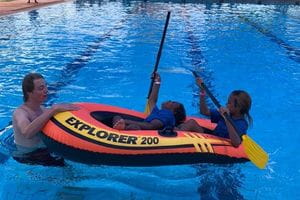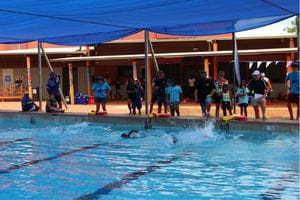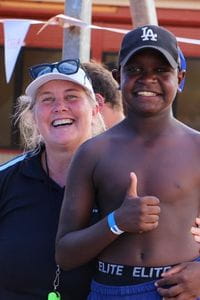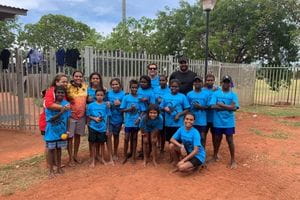Kimberley kids enjoy their first Spirit Carnival
 The Kimberley region has the second highest drowning rate of any region in WA, with 20 people losing their lives to drowning in the Kimberley over the ten years from 2009 to 2019. Overall, 35.4% of people who drowned in the Kimberley were Aboriginal, the largest proportion of any other region. Royal Life Saving WA research shows that Aboriginal children between the ages of 5 and 14 are 8.6 times more likely to be involved in a fatal drowning than non-Aboriginal children, and overall, half of children who fatally drown are Aboriginal. These incidents were most likely to occur at inland waterways such as rivers, while participating in a range of aquatic activities including swimming, fishing and paddling.
The Kimberley region has the second highest drowning rate of any region in WA, with 20 people losing their lives to drowning in the Kimberley over the ten years from 2009 to 2019. Overall, 35.4% of people who drowned in the Kimberley were Aboriginal, the largest proportion of any other region. Royal Life Saving WA research shows that Aboriginal children between the ages of 5 and 14 are 8.6 times more likely to be involved in a fatal drowning than non-Aboriginal children, and overall, half of children who fatally drown are Aboriginal. These incidents were most likely to occur at inland waterways such as rivers, while participating in a range of aquatic activities including swimming, fishing and paddling.
Royal Life Saving WA is working hard to address these statistics, by focusing attention on swimming and lifesaving programs for children in regional and remote areas, with a special focus on remote aboriginal communities. As part of this work, today we held our inaugural Kimberley Spirit Swimming and Lifesaving Carnival at the Halls Creek Aquatic Centre, thanks to support from Lotterywest, the Department of Local Government Sport and Cultural Industries and the Shire of Halls Creek. The carnival saw 50 children come together in a fun environment to participate in an interactive event encouraging physical activity and the learning of valuable lifesaving skills, while also giving them an opportunity to get together and showcase the swimming skills they have learnt throughout the year via the Swim and Survive and Swim for Fruit programs.
Royal Life Saving WA Senior Manager Education, Trent Hotchkin, says these swimming and water safety programs are essential. “Learning to Swim and Survive is a vital life skill that all Western Australian children need to safely participate on, in and around water. Building swimming and water safety skills in young children is vital work and the single most important investment we can make as a community to prevent drowning.”
The schools involved in the carnival included Yiyili Aboriginal Community School, Warlawurra Catholic School, Ngalangangpum School and Halls Creek District High School, with the children collectively taking a round trip of more than 600 kilometres to attend the event.
 Royal Life Saving WA Kimberley Development Officer Glenn Taylor says the event was more than just your average school swimming carnival. “The children took part in the usual swimming races, but also lifesaving activities including obstacle, rescue tube and rope throw relays. Importantly they were also be able to meet and interact with children from other communities in the Kimberley, it was a real coming together to have fun experience. To round out the carnival the participants were also treated to a special lunch.”
Royal Life Saving WA Kimberley Development Officer Glenn Taylor says the event was more than just your average school swimming carnival. “The children took part in the usual swimming races, but also lifesaving activities including obstacle, rescue tube and rope throw relays. Importantly they were also be able to meet and interact with children from other communities in the Kimberley, it was a real coming together to have fun experience. To round out the carnival the participants were also treated to a special lunch.”

Royal Life Saving Society WA’s Trent Hotchkin says the hope is that the children involved in this carnival will make a real difference in the future of their communities. “By enabling these children to take part in our Swim and Survive swimming and water safety program and enjoy events like the Spirit Carnival we hope to see them lead a generational change, learning skills to become the future lifesavers in remote and regional WA. We want to give these children the opportunity to not only learn skills to keep themselves safe while in, on and around water, but also to equip them to encourage all community members to develop lifesaving swimming skills.”
You can find out more about our work across the Kimberley at the link below.
